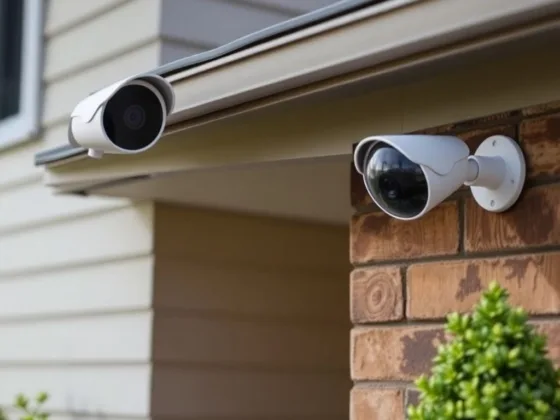Table of Contents Show
The right smart TV can greatly add more value to your home entertainment and fill your living room with the latest content from streaming service providers like Netflix, Hulu, and Amazon Prime.
But choosing the perfect set up for your viewing habits means you need to do a lot of research on screen resolution, display technology, as well as the platform that serves as the equipment’s brains. One of the best smart TVs out in the market today is the Samsung The Frame TV.

Smart TV specs can be confusing, but the moment you get a grip on what the numbers, measurements, and jargons mean, you’ll be able to buy with confidence.
If you are in search of a TV for your home and your room is consists of large windows and it’s too light in your home at day time, then you must need to visit the Best Budget TV for Bright Room. Here you can get the highly recommended TVs for your bright room.
You can Check latest smart TVs buying guide on Getflink. The Getflink suggestions will add the best value to your home design.
Below are some of the things you need to look for when shopping for a new smart TV.
Size Matters
One of the first things people consider when buying a new TV is the size. How big should your television be? The answer depends mostly on the size of your budget and the physical space you plan on installing it.
Grab a measuring tape and write down the dimensions of the area where you plan to place the TV. This could be a bedroom or living room. Even after measuring everything, you would probably still have issues picturing how the television will fit.
Another thing to consider is how far away the TV is from where you’re sitting as you watch. Huge TV sets will overwhelm your eyes if it’s too close to you. If you have limited space, you need to consider a smaller sized TV.
There’s no correct way to calculate the right screen size according to viewing distance. But some manufacturers and experts do offer some advice. If you can, try to visit a local retail store to test out sizes and distances for yourself.
Samsung The Frame TV comes in different sizes, the smallest of which is at 32 inches. Other sizes are 43-inch, 50-inch, 65-inch, and 75-inch.
Read Also:
Resolution
Just like laptops or smartphones, TV resolution refers to the number of dots or pixels that make up the screen. The more pixels, the better the resolution, the sharper the display.
But screen size is important, too, because the same number of pixels across a small screen won’t look as clear as on a bigger screen.
You may have heard of smart TVs with 4K displays (with 3840 x 2160-pixel resolutions). These kinds of TVs have greatly saturated the market with some companies even using the term “ultra HD”.
The thing is, even with all these fancy names and descriptions, they actually have the same resolution, and just about every new TV set today comes with this specification.
If you’re really looking to save money and want to buy a smaller set, like under 40 inches, you can find a couple of budget “full HD” models to choose from.
If you have a lot of money to spare, you may want to check out 8K TV sets. Samsung The Frame TV both has HD and 4K sources looking crisp and detailed on its screens.
Understanding Display Technology
Television displays nowadays rely on two rival technologies: the LED LCD and the OLED. It can get tricky trying to say which one is better, mainly because manufacturers add their own modifications and technologies to each platform.
In addition, both technologies naturally improve and get better as they continue to get developed.
LED LCD and OLED both use LEDs for illumination but in different ways. The LED LCD screens use white light-emitting diodes, or LED pixels as a backlight to create images through an LCD filter.
The LEDs usually take up the entire screen, but some TV sets, especially the cheaper ones, often limit them to just the edges. LED LCD displays are considered sharper compared to OLED ones, and they also give a more natural-looking light control.
Organic light-emitting diode displays, or OLED, on the other hand, do without the backlight and use an electric current to light up the pixels one-by-one instead.
This enables the screen to respond faster. And because OLED displays switch black pixels off completely (unlike LED LCD screens which simply dim them), they end up having better contrast. They’re more expensive to make too so they’ll definitely cost more than the LED LCD ones.
These two technologies are constantly evolving with some of the newer LED LCD sets now using local dimming, which selectively dims the light in certain parts across the screen.
There are also mini LED TV sets that come with super-small zones, as well. This means LED LCD display backlighting can be almost (yet not quite) as accurate as OLED.
Choose a Software Platform
Don’t spend too much time worrying over the software that powers your smart TV—it shouldn’t influence your decision in a major way.
All smart TV platforms come with similar sets of features including access to streaming services and apps like YouTube, Hulu, and Netflix.
Smart TV manufacturers also utilize their in-house software. For example, Sony uses the Google-made Android TV; while TCL uses Roku Software; Samsung The Frame TV, on the other hand, uses Tizen.
You may observe some slight differences from platform to platform, but these differences are just minor.
Check Out the Picture-improving Technology
Deciding what you want from the basic specs mentioned earlier will help you narrow down your choices when it comes to smart TVs. Once you’ve got that done, see whether the sets on your shortlist come with some of these picture-enhancing features.
For instance, most screens nowadays come with high dynamic range or HDR. This feature brings out the detail in the darkest and lightest parts of the picture and even improves the picture’s range of colors.
Make sure that the sets you are eyeing support this feature. Although you may find competing HDR standards, such as Dolby Vision vs HDR10, any HDR support can give you a better-looking display.
Consider the refresh rate as well. This basically means the number of times the TV display refreshes for each second. For example, a rate of 60Hz means the image refreshes 60 times per second.
The more refreshes there are, the more you will get sharper images and lesser motion bur when watching sports or fast-moving action scenes.
When checking out specs, do look out for numbers labeled as “effective” refresh rates. These terms can be exaggerated and often don’t reflect the panel’s refresh rate.










